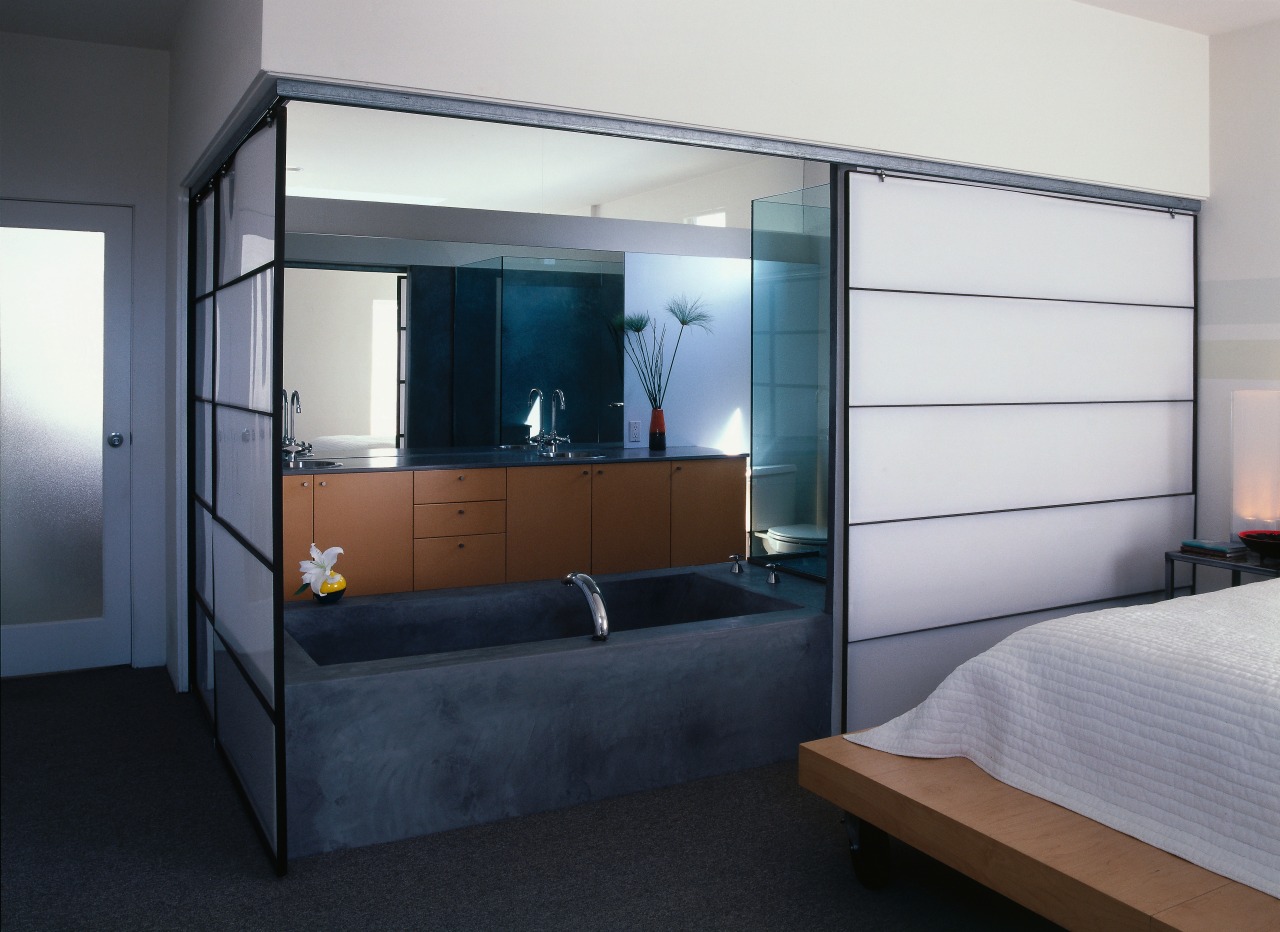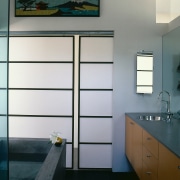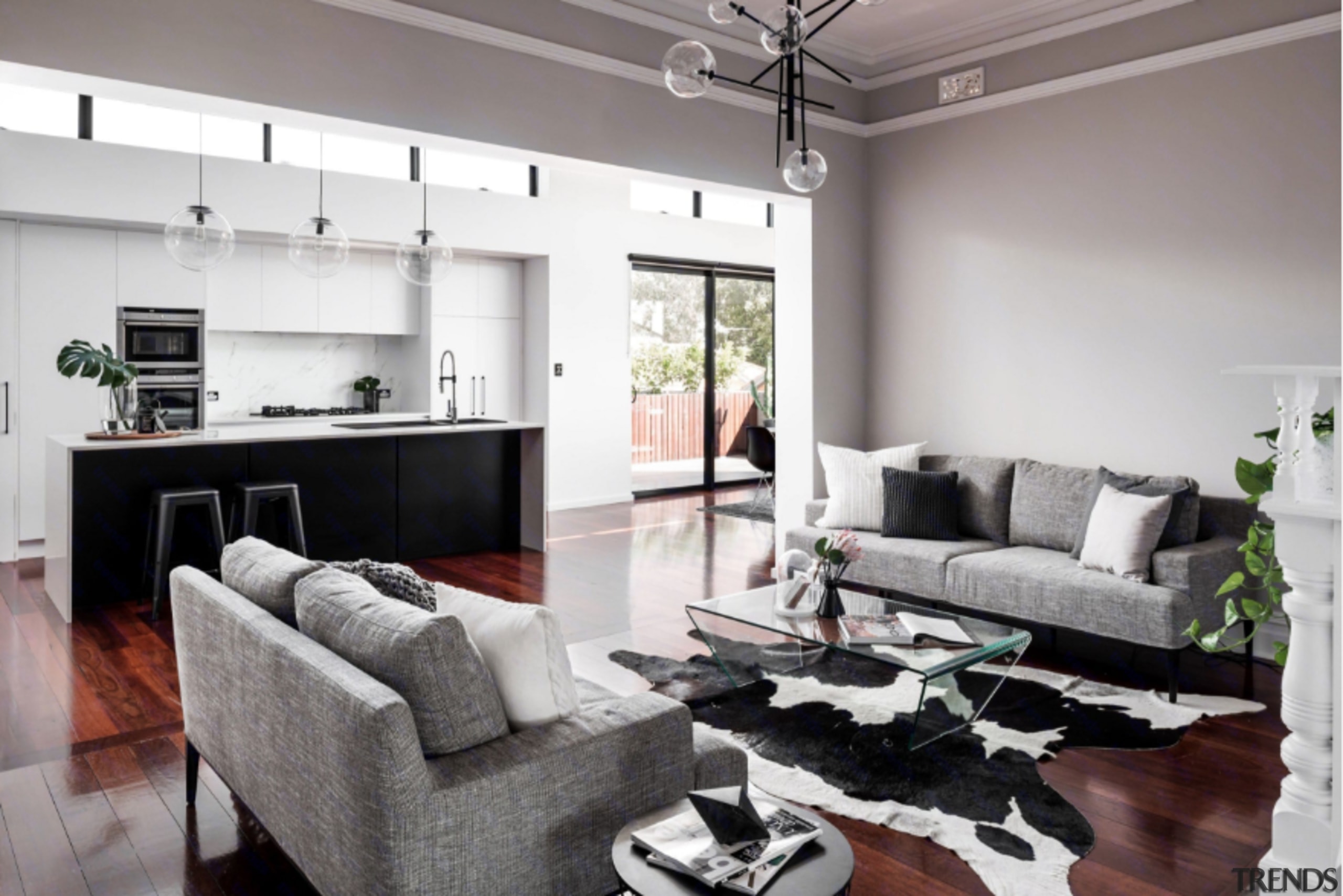Cutting corners
Translucent sliding screens between the bathroom and bedroom create a sense of space, without any loss of privacy
Space and budget are two common limitations that frequently face homeowners, whether they are remodelling one room or building a whole new home.
These were challenges architect Mark Kirkhart faced when designing a small duplex block in an area zoned for light commercial and residential.
"We chose cost-effective materials for the interior and exterior of the apartment. This helped us to keep within a strict budget, and also allowed the building to relate better to its industrial surroundings," he says.
Partly for these reasons, and also because space was limited, the master bathroom was very small. So, rather than designing a conventional bathroom in a separate room, the architect fitted it neatly into a corner of the bedroom behind translucent, sliding Shoji screens.
"These screens can be either closed off for privacy, or opened right up, so neither space feels cramped or confined," he says.
To keep within his budget and create the industrial look he wanted, Kirkhart made the screens himself, using sections of steel welded together. These were then infilled with translucent, waterproof plastic material.
For the same budgetry reasons, Kirkhart used a wood framework to create the inside and outer walls of the tub and shower. These were then plastered, sealed and given a waxed finish, so they resembled cast concrete. Industrial-grade, stainless steel sinks and gooseneck faucets were built into the wall-mounted vanity.
"These fittings are not fancy; they are simple and practical, and contribute to the industrial look of the bathroom," says Kirkhart.
Clear-sealed, medium density fiberboard cabinetry adds warmth to the monolithic color scheme of grey stainless steel and concrete.
Credit list
Main contractor
Toilet
Faucets
Towel bar
Lighting
Vanity countertop
Fittings
Sinks
Flooring
Wallcoverings
Window treatments
Story by: Trendsideas
Home kitchen bathroom commercial design







